In this guide, we’ll show you two different ways to describe tables: using the psql command-line tool, using the PgAdmin graphical interface, and through SQL queries. We’ll walk you through the entire process step by step, using a practical example to make it easy to follow along.
Using psql
Step 1 - Open the terminal on your device and connect it to your desired Postgres database. Follow our guide to see the whole process, click here

Step 2 - To display the list of tables present in the database, run \dt command
\dt
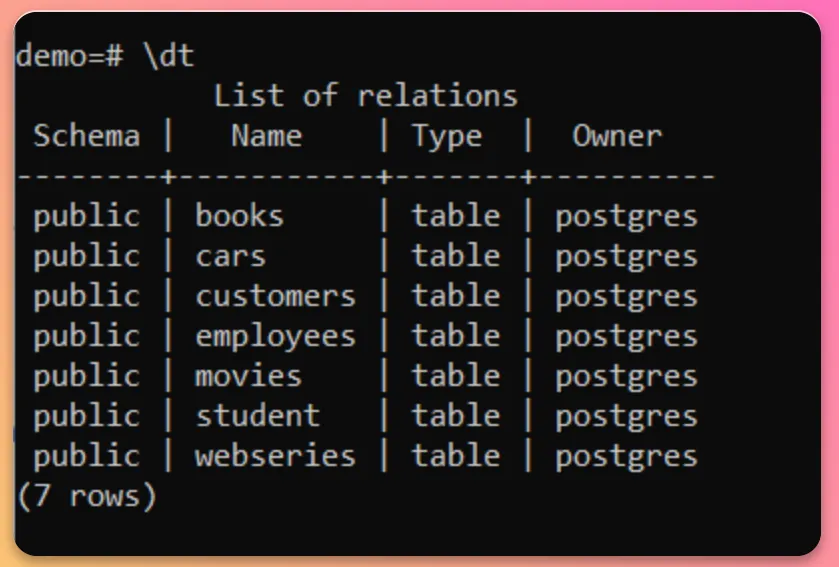
Step 3 - To describe a specific table from the database, run \d table_name command
\d table_name
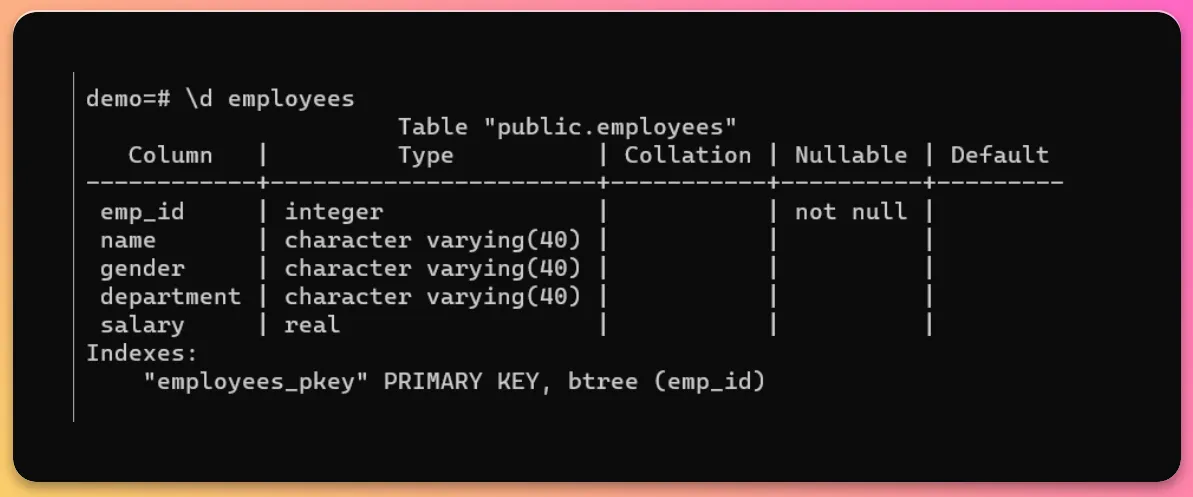
Make sure to replace table_name with the name of table whose details you want to see
Using PgAdmin
Step 1 - Open the PgAdmin tool on your device
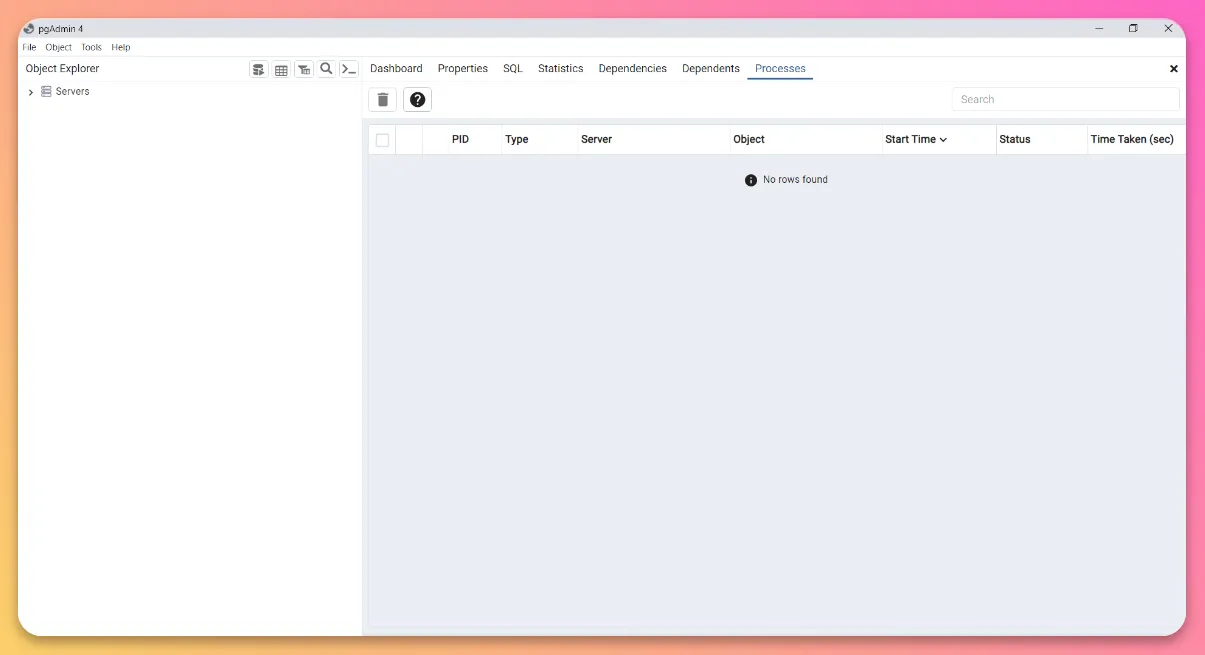
Step 2 - In the left sidebar, expand the Servers folder and direct to your desired database. In that database, expand the Schemas folder and go the Tables folder.
It wil display the list of all tables present in your database.
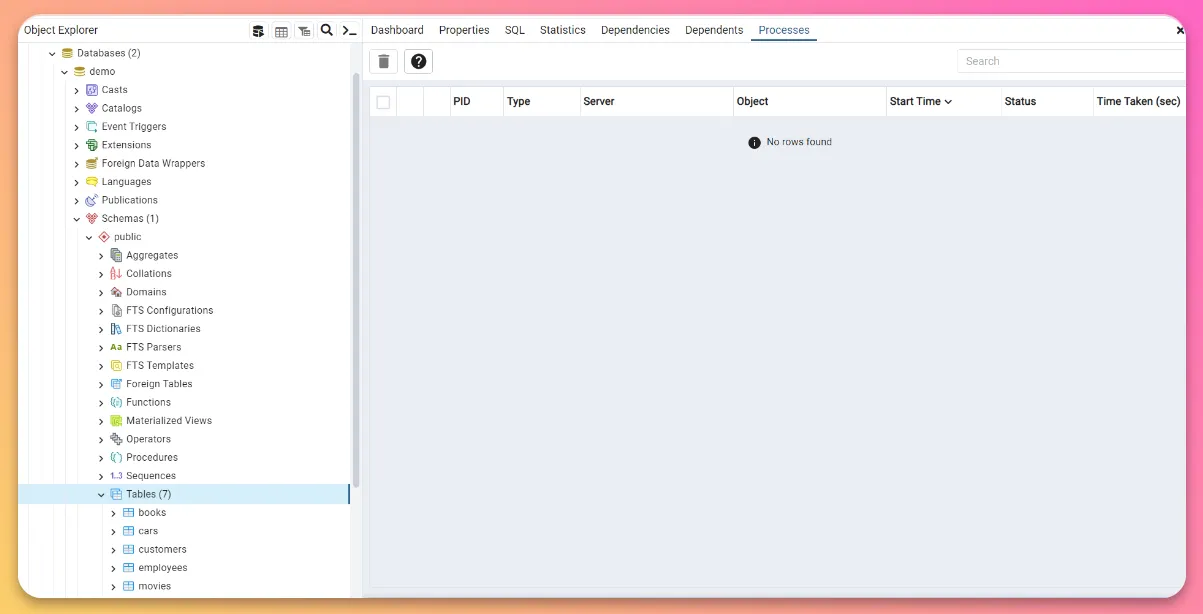
Step 3 - Right click on any table and select Properties. Properties dialog will appear containing Columns tab.
Columns tab will display the details of all columns present in that table.
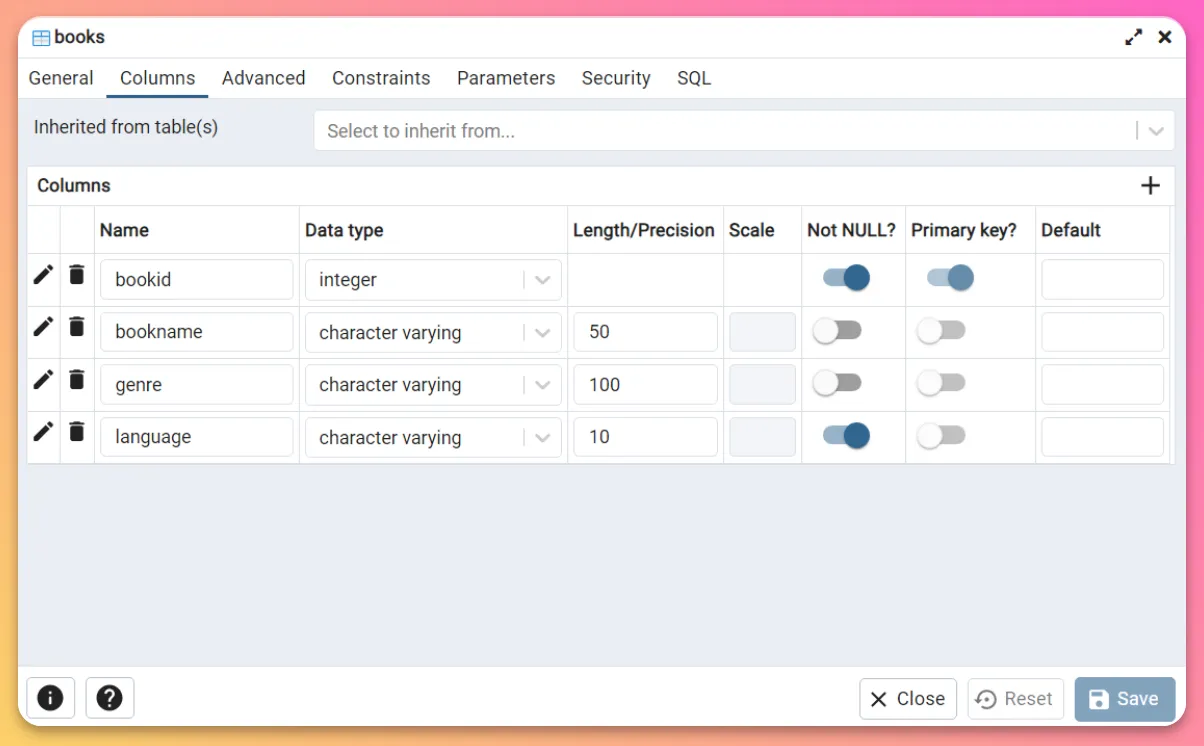
Using SQL query
There is a SQL query which uses Postgres’ information_schema tables, which contain metadata about tables in Postgres can be executed in the terminal to display a comprehensive list of columns along with their respective data-types present in that tables.
Step 1 - Open your terminal and connect it to your desired Postgres database. Follow our guide to see the whole process, click here
Step 2 - Now run this SQL query to get the list of all tables present in the database
SELECT table_name, column_name, data_type FROM information_schema.columns WHERE table_name = tableName;

Do replace tableName with the name of table whose details you wish to display
Conclusion
In this guide we have discussed two most commonly practiced methods to describe each individual table present in a Postgres database.
To explore some amazing Tembo’s extension, we highly suggest you to read our very insightful documentation pgAdmin and psql
Do check our other guides present on guides page to know more about Postgres
